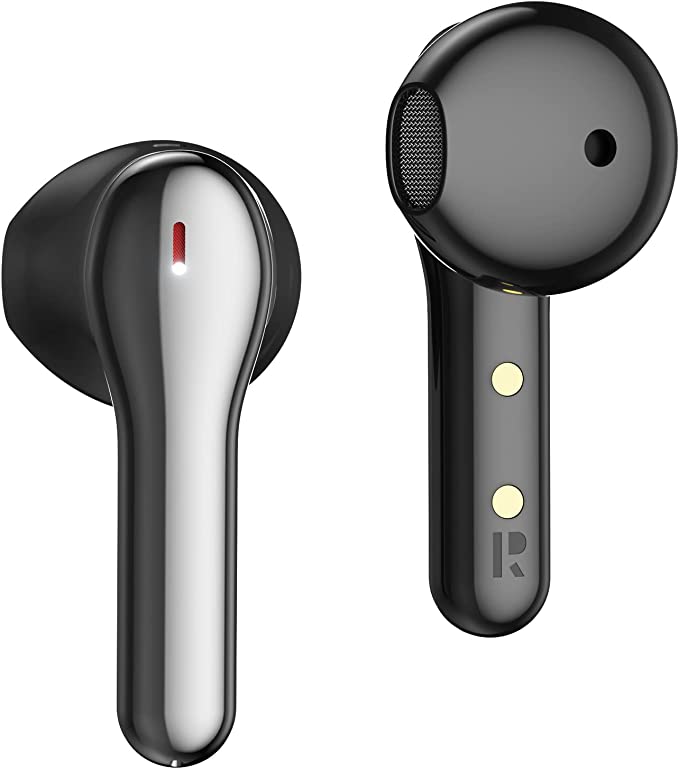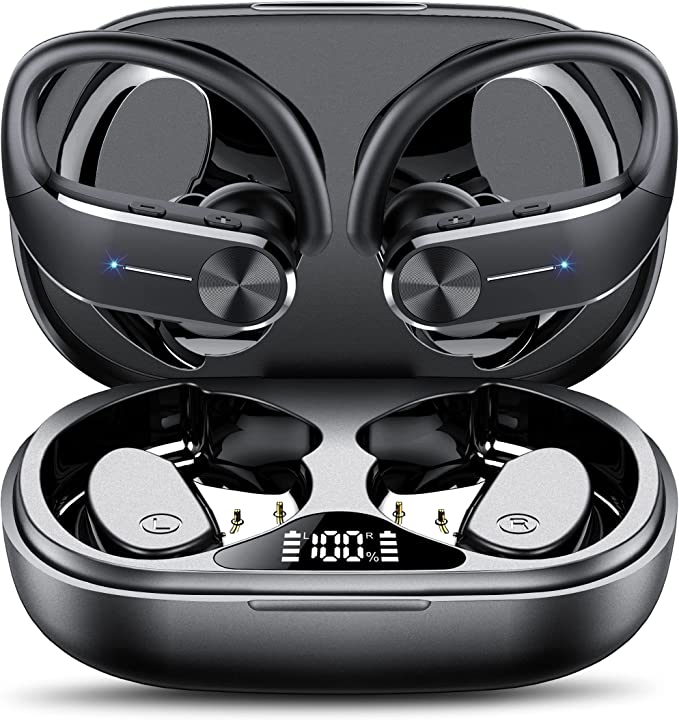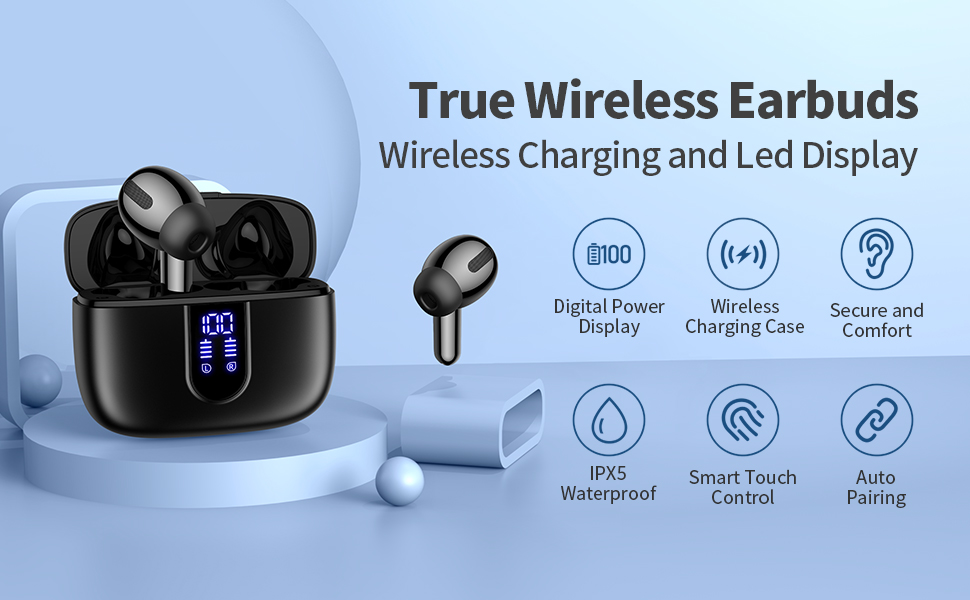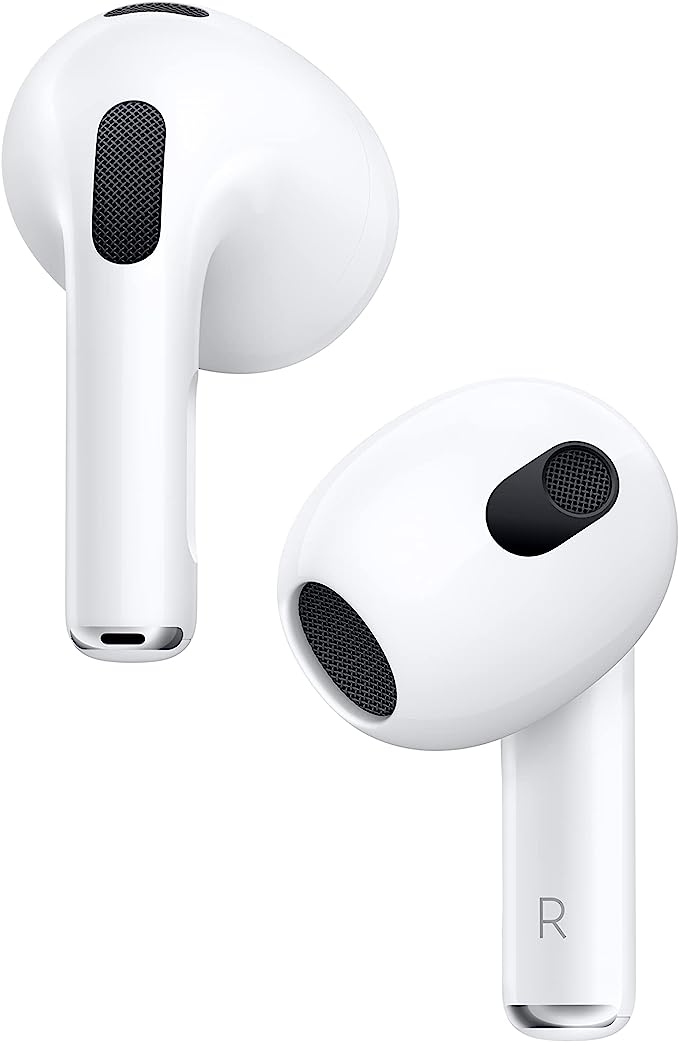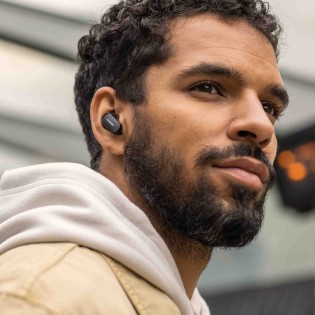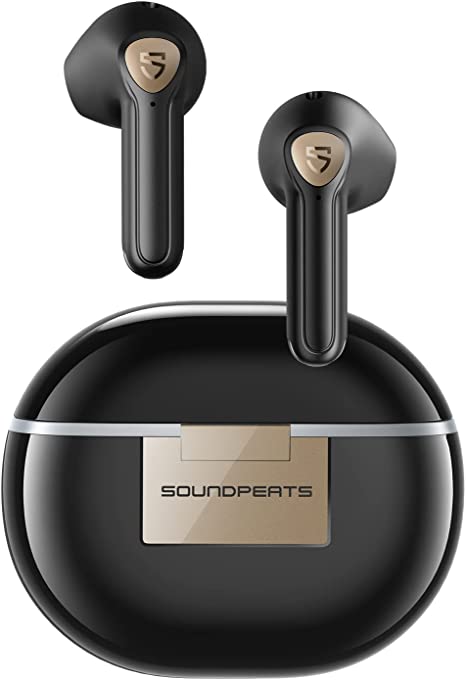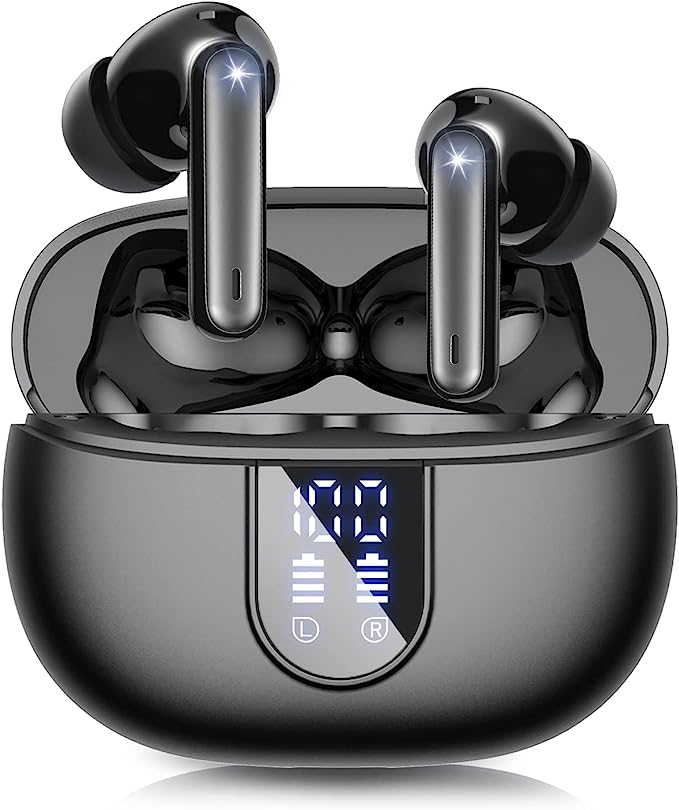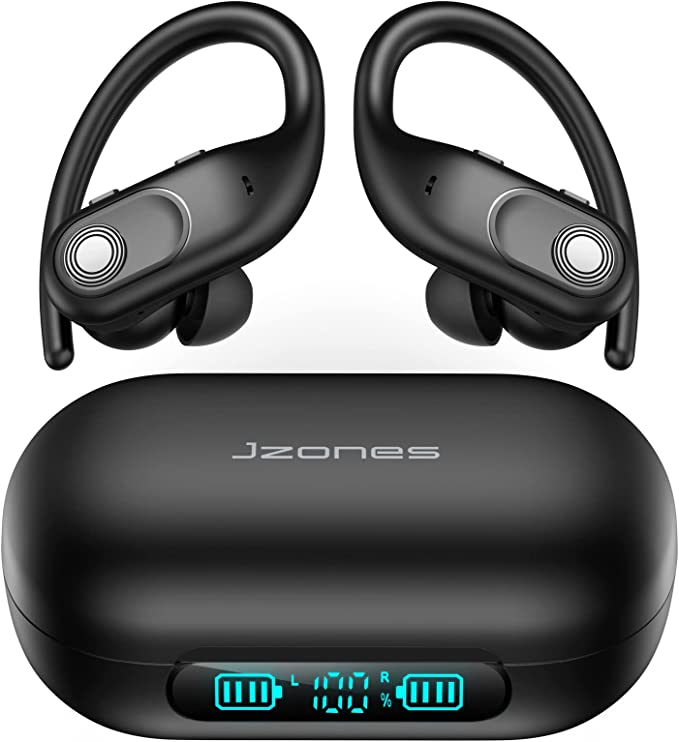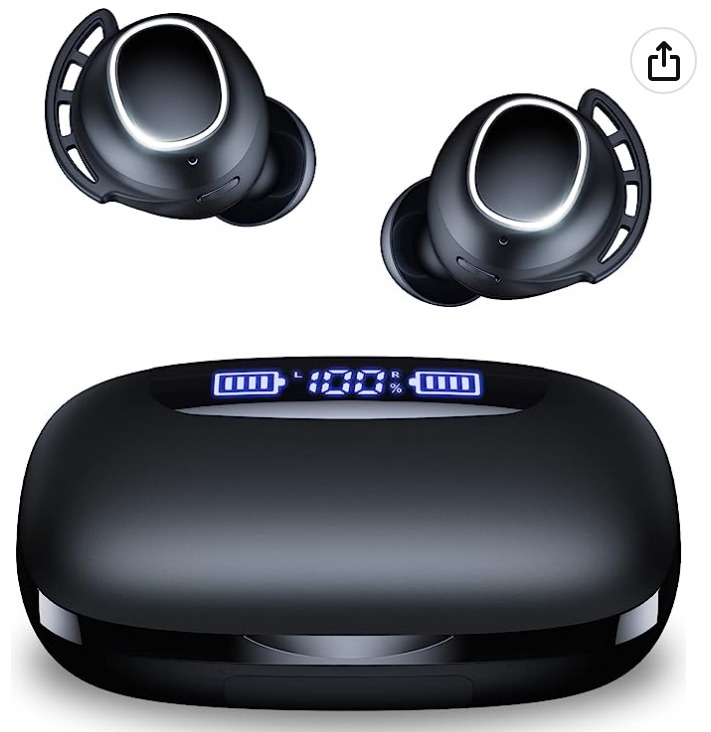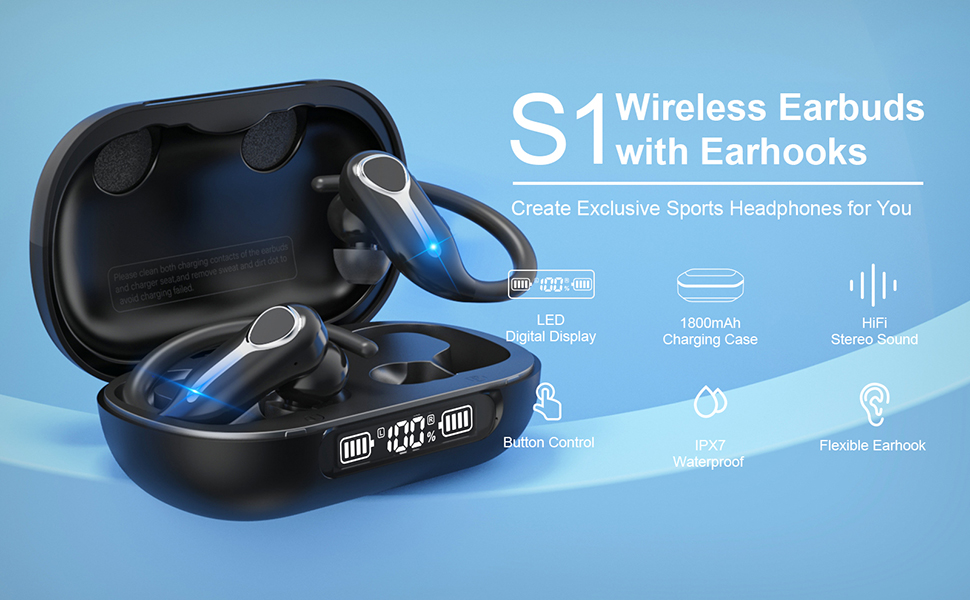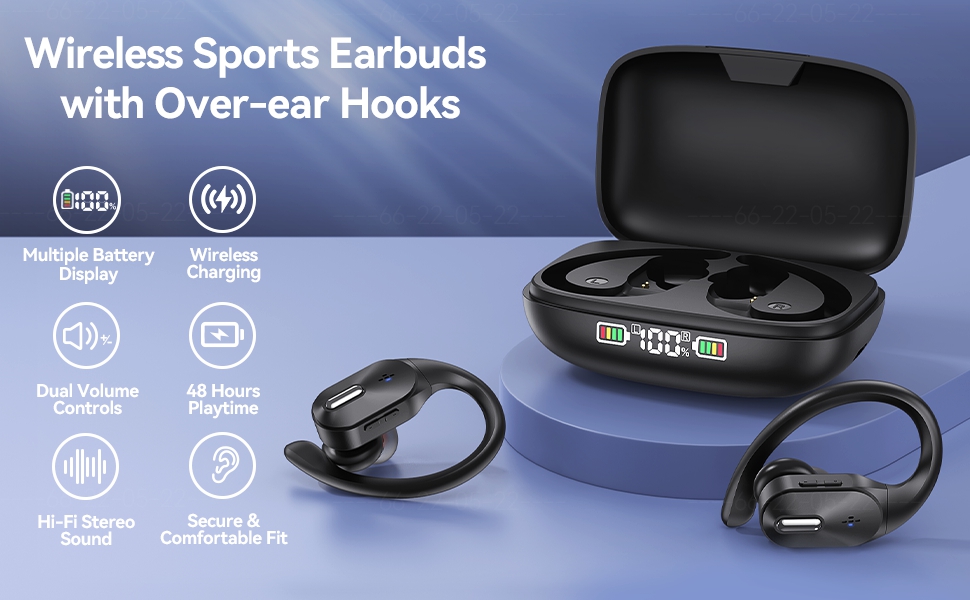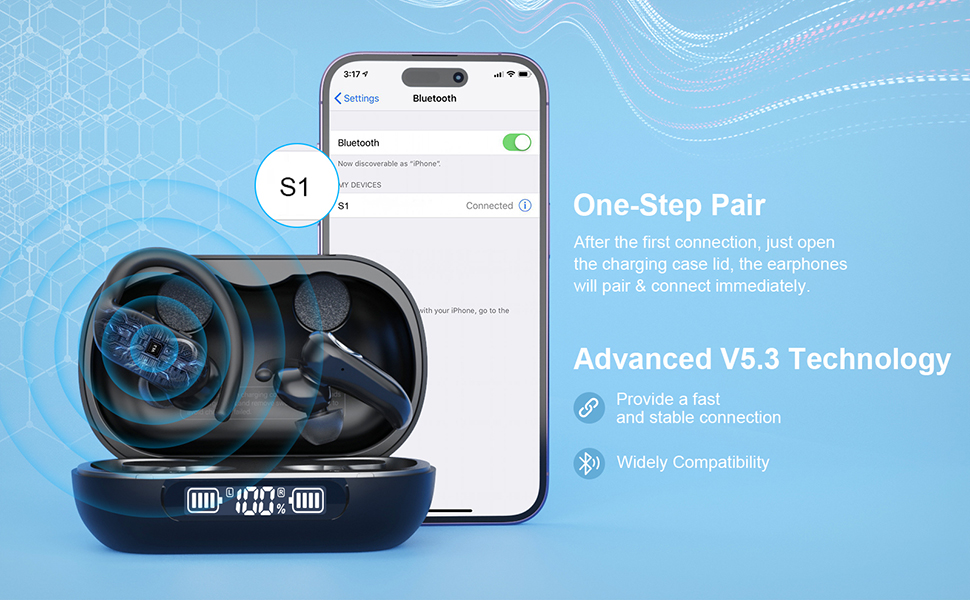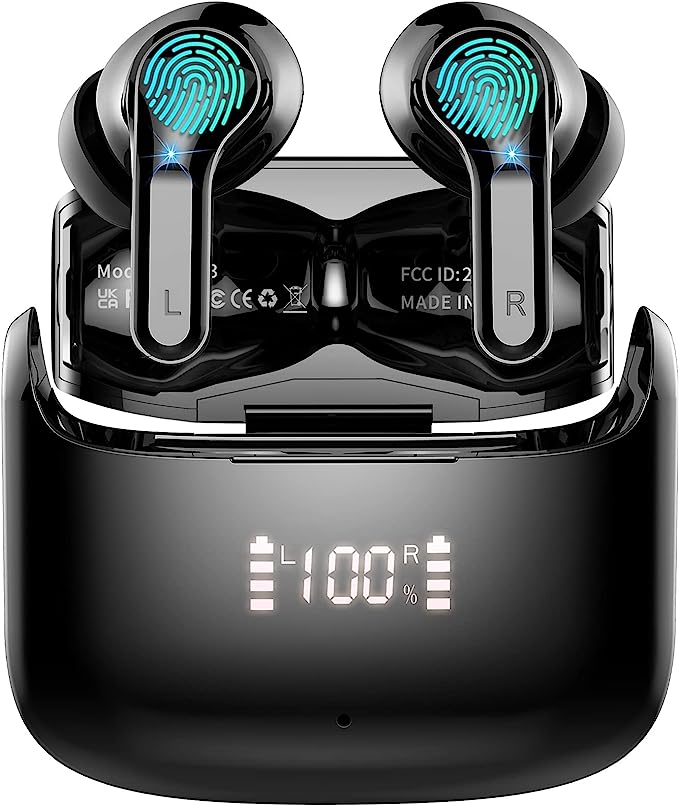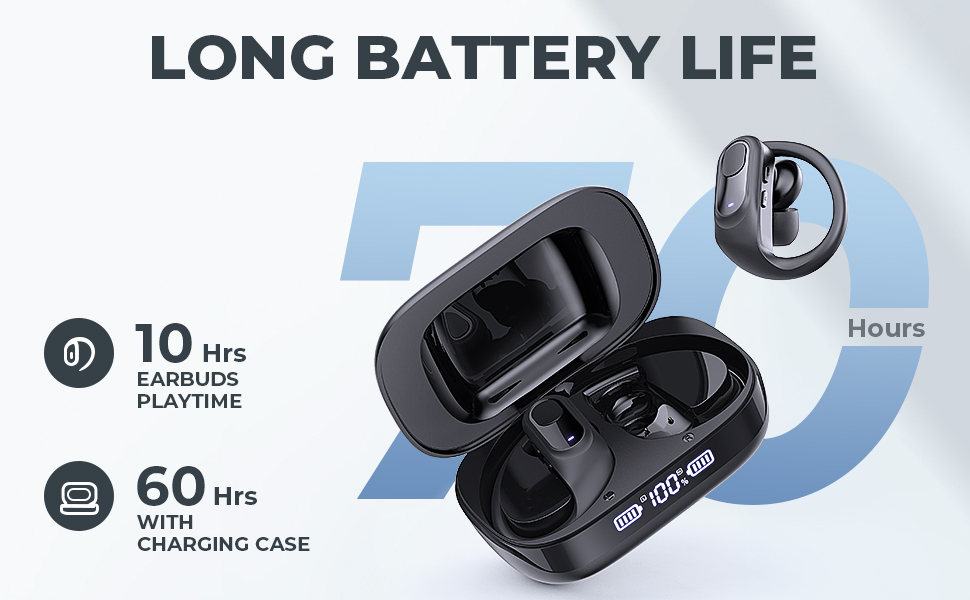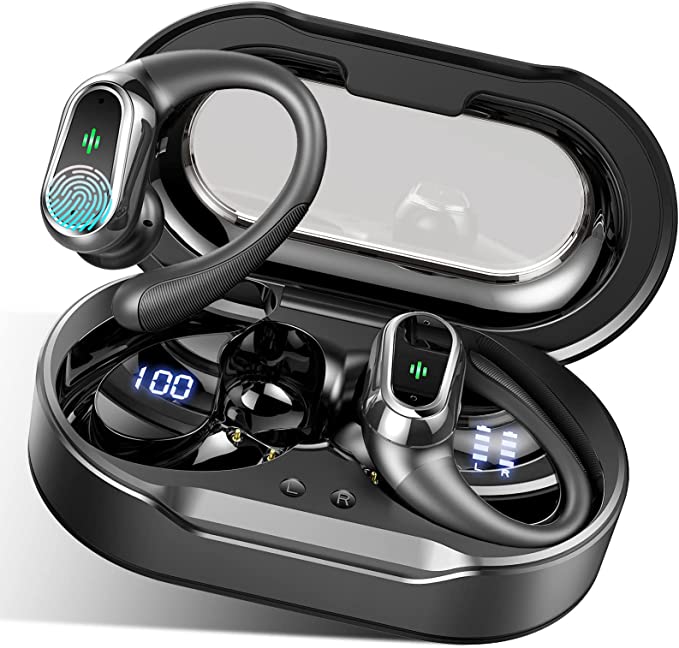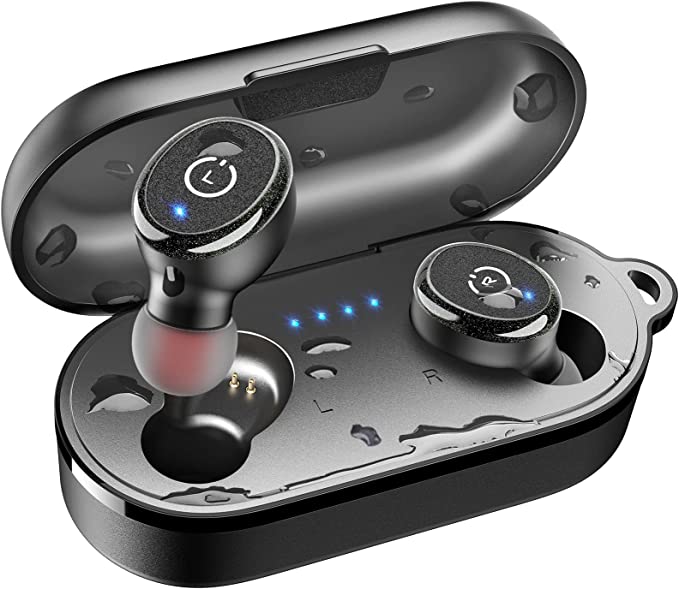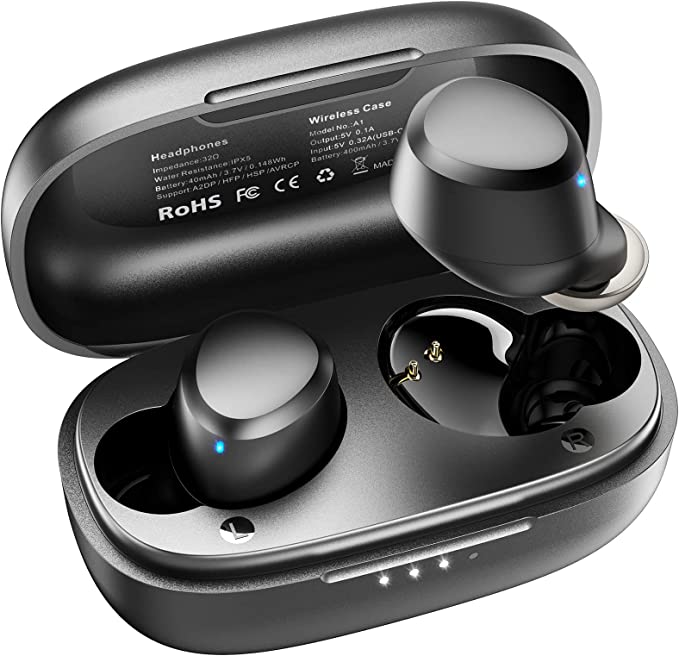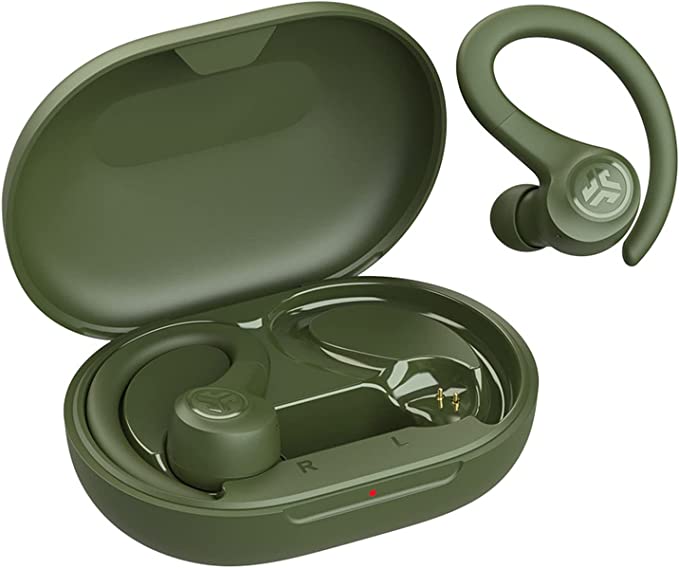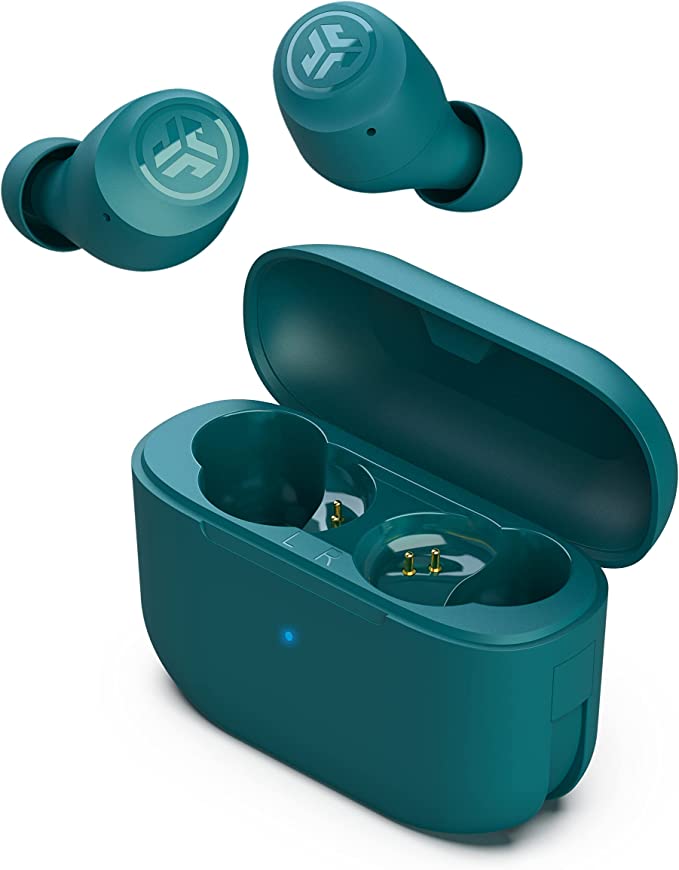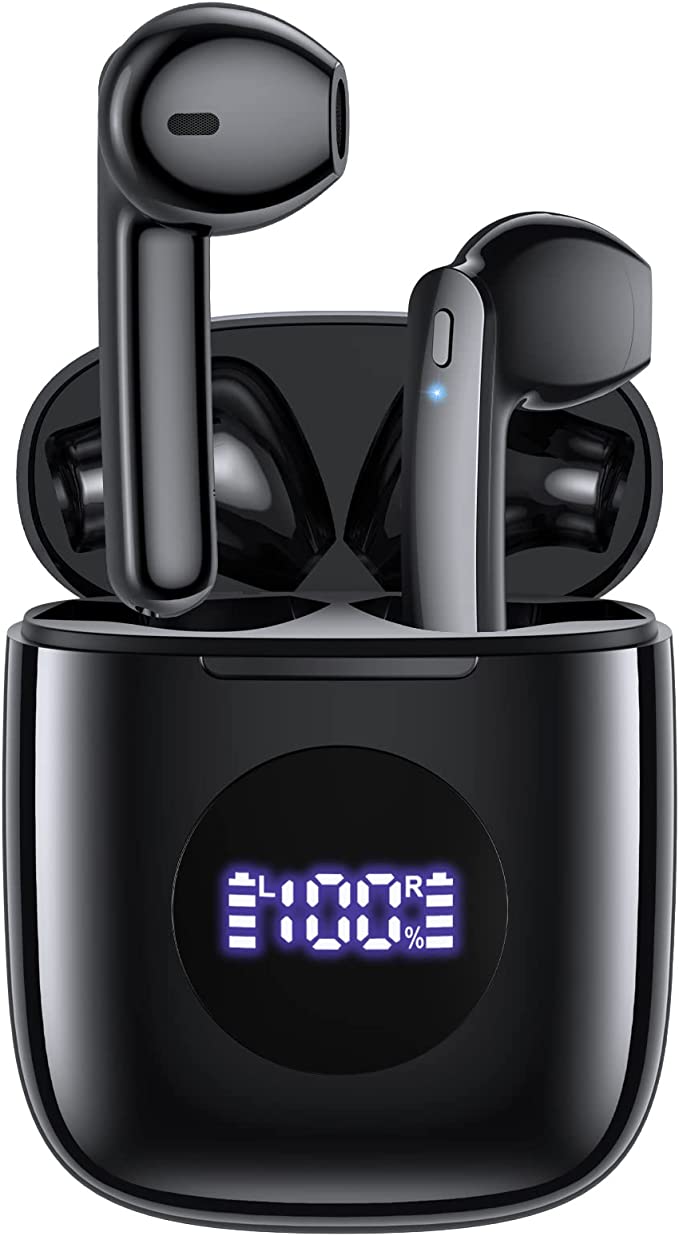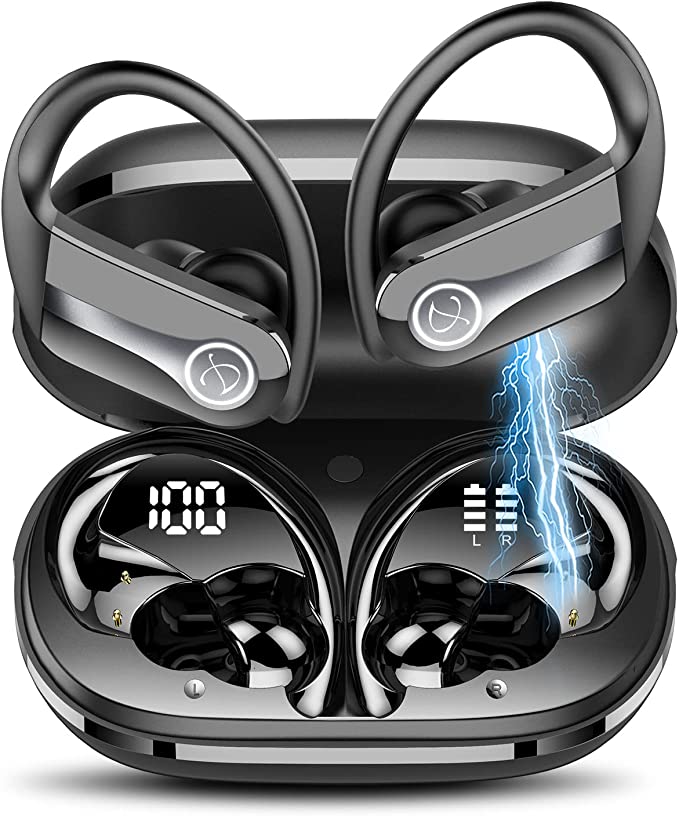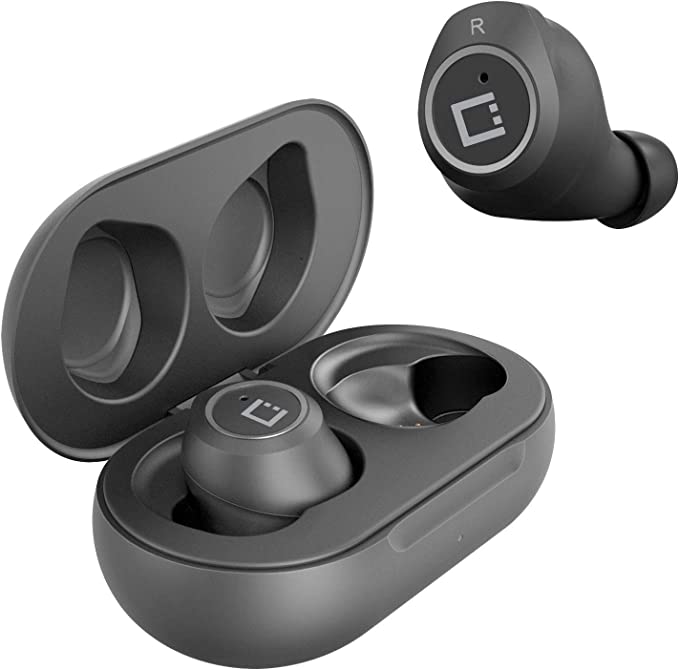Sabbat E16 Earbuds: The Science of Sound & Uninterrupted Wireless Freedom
Update on May 29, 2025, 6:03 p.m.
Overture: The Modern Quest for Personal Sonic Sanctuaries
In the vibrant, often chaotic rhythm of modern life, we increasingly seek out personal oases of sound. Whether it’s the energizing beat that fuels a morning run, the captivating narrative of a podcast on a crowded commute, or the crystal-clear voice of a loved one bridging distances, our desire for high-quality, untethered audio has never been more profound. It’s a quest for immersion, for freedom, for a soundtrack that moves with us, unencumbered. The Sabbat E16 wireless earbuds, offered by ICESOMNUS, step onto this stage not just as a listening device, but as a compact vessel brimming with fascinating audio technology. But what truly lies beneath their sleek exterior? Forget the marketing buzz for a moment; let’s embark on an enlightening journey, as a curious explorer with an ear for detail, to uncover the hidden science that orchestrates your personal listening experience. This isn’t just about one pair of earbuds; it’s about appreciating the symphony of innovations that make such modern marvels possible.

Act I: The Unseen Connection – The Magic of Bluetooth 5.2
Scene 1: Weaving the Wireless Thread.
Cast your mind back to a time when enjoying music on the go meant wrestling with a tangle of wires, a frustrating dance of knots and snags. The advent of Bluetooth technology was a liberation, a digital snipping of those irksome tethers. Born in the late 1990s out of a collaborative effort by telecom and computing companies (fun fact: its name honors Harald Bluetooth, a 10th-century Danish king famed for uniting disparate Danish tribes, just as Bluetooth aimed to unite devices!), this wireless standard has steadily evolved. Its mission? To create a robust, low-power way for our myriad gadgets to communicate seamlessly. With each iteration, Bluetooth has become more adept at handling the increasingly sophisticated demands of modern life, especially the bandwidth-hungry and latency-sensitive realm of audio.

Scene 2: Decoding Stability and Efficiency.
The Sabbat E16 earbuds come equipped with Bluetooth 5.2. Now, this isn’t merely an incremental software update; it represents a significant leap in how your earbuds ‘talk’ to your phone or tablet. Think of Bluetooth 5.2 as an exceptionally skilled air traffic controller for your audio data. Compared to its predecessor, Bluetooth 5.0, version 5.2 introduces enhancements that lead to a more stable and interference-resistant connection. How so? While the exact proprietary algorithms are complex, the improvements generally involve more sophisticated channel selection (finding the clearest ‘airwaves’ to use), faster and more robust error correction, and more efficient data packet management. The result, as the Sabbat E16 product description proudly states, is a connection that’s “more stable… not stuck, no delay.”
Furthermore, a key triumph of Bluetooth 5.2 is its enhanced power efficiency. According to the manufacturer, the E16’s “Power consumption is only half of Bluetooth 5.0.” This isn’t magic; it’s clever engineering. Bluetooth Low Energy (BLE) aspects, further refined in later iterations of the standard that 5.2 builds upon, allow devices to sip power judiciously, only consuming what’s necessary for the task at hand. For you, this translates directly into longer listening sessions, meaning your personal soundtrack doesn’t abruptly end mid-adventure.
Scene 3: The Listener’s Gain.
So, what does this highly-engineered, invisible handshake mean for your daily life with the Sabbat E16? It means your music is less likely to stutter مدينة (madīna - city) a bustling city street where countless other wireless signals are vying for attention. It means your podcast doesn’t drop out গুরুত্বপূর্ণ (gurutbapūrṇa - important) a crucial plot point during your commute. It means that when you take a hands-free call, the connection remains solid, allowing your conversation to flow naturally. This robust wireless foundation is the unsung hero of your untethered audio experience, diligently working behind the scenes.

Act II: Crafting the Soundscape – Inside the E16’s Acoustic Heart
Once that stream of digital audio data arrives flawlessly at the E16 earbuds, the next marvel of science takes over: transforming those ones and zeros back into the rich tapestry of sound that stirs our emotions. This is the realm of acoustic engineering.
Scene 1: The Mighty Miniatures – Understanding 10mm Dynamic Drivers.
At the very core of each Sabbat E16 earbud, responsible for the actual creation of sound, is a 10mm dynamic driver. To understand its significance, imagine a traditional loudspeaker, the kind you might find in a high-fidelity sound system, and then shrink it down to fit comfortably within your ear. That, in essence, is what a dynamic driver is.
The alchemy is fascinating: an electrical audio signal, carrying the blueprint of your music, flows into a finely wound voice coil. This coil is attached to a lightweight, yet rigid, diaphragm (a thin membrane) and is suspended within a powerful magnetic field. As the electrical current undulates through the coil, it creates a fluctuating magnetic force, causing the coil and the attached diaphragm to vibrate rapidly – thousands of times per second. These vibrations push and pull the surrounding air, creating pressure waves that our eardrums interpret as sound. It’s a beautiful dance of electromagnetism and mechanics.
Now, why does the “10mm” specification for the Sabbat E16 matter? In the world of dynamic drivers, size can indeed influence performance, particularly at the lower end of the frequency spectrum – the bass. A larger diaphragm surface area, like that of a 10mm driver, can generally displace more air with each vibration. Think of it like the difference between tapping a small hand drum versus striking a large bass drum; the latter produces a deeper, more resonant boom because it moves a greater volume of air. The E16’s drivers, as touted by the manufacturer, aim to “pump out more bass and louder sound,” contributing to a “HIFI sound” experience capable of delivering both the thunderous lows of a bass guitar and the delicate shimmer of a cymbal.
Scene 2: The Purity Protocol – aptX and AAC Codecs.
Our journey from digital file to audible sound isn’t over yet. Because raw, uncompressed audio files are enormous (think of a WAV file for a single song), they need to be compressed to be efficiently streamed wirelessly via Bluetooth. This is where audio codecs (short for coder-decoder) enter the stage. They are sophisticated algorithms that shrink the audio data for transmission and then expand it back at the receiving end.
The most basic Bluetooth codec, SBC (Subband Codec), gets the job done, but it’s a bit like a rushed packing job – some details might get lost or smudged in the process. The Sabbat E16, however, supports more advanced and refined codecs: aptX and AAC.
- AAC (Advanced Audio Coding): This codec is widely used, particularly favored by Apple devices. It generally offers superior sound quality to SBC at similar data rates (bitrates), meaning it can deliver more sonic detail with the same amount of wireless ‘space.’
- aptX (developed by Qualcomm): This family of codecs is renowned in the Android and wider audio world for its ability to deliver “CD-like” quality over Bluetooth. aptX achieves this through a more efficient compression method that’s designed to preserve more of the original audio information, especially the nuances that give music its richness and depth. The goal, as the E16’s product information puts it, is to “minimize distortion to get crystal clarity, deep and resonant bass HIFI sound.”
Think of aptX and AAC as expert sound curators. They intelligently analyze the audio stream, prioritizing the most crucial sonic information and using psychoacoustic principles (the science of how we perceive sound) to discard data that our ears are less likely to miss. It’s like having a skilled art restorer for your music, ensuring that what you hear is as close as possible to the artist’s original vision, revealing subtle textures and a wider dynamic range. For you, this means a more engaging, immersive, and ultimately more emotionally resonant listening experience.
Scene 3: The Enigma of “Coaxial Acoustic Architecture.”
The full name of the Sabbat E16 proudly includes the term “Coaxial Acoustic Architecture.” While the product information provided doesn’t delve into the specific engineering details of how this is implemented within the E16, the term itself hints at a sophisticated design ambition. In traditional loudspeaker design, a “coaxial” driver is one where multiple sound-producing elements (like a tweeter for high frequencies and a woofer for low frequencies) are mounted along the same central axis. The primary benefit of such a design is improved phase coherence – meaning the sound waves from different drivers arrive at the listener’s ear at the precise same moment – and the creation of a more accurate point-source image, where the sound appears to emanate from a single, unified point in space, much like it does in a live performance.
Without detailed schematics or further technical disclosure from ICESOMNUS for this specific E16 model, we can only appreciate the term as an indicator of a design philosophy aimed at achieving a more integrated and accurate sound reproduction. It suggests an attention to how the sound waves generated by the 10mm driver are channeled and delivered to your ear, striving for clarity and a well-defined soundstage. This is one of those areas where the “secret sauce” of a particular audio brand often lies.
Act III: The Art of Clear Conversation – Demystifying CVC 8.0
Scene 1: The Noise of the World vs. Your Voice.
Let’s face it: our lives are rarely lived in soundproof booths. Whether you’re trying to coordinate with a colleague from a bustling café, catch up with family while navigating a windy street, or join a conference call from a lively open-plan office, background noise is the persistent nemesis of clear communication. This is where the Sabbat E16’s call-focused technology steps into the spotlight.
Scene 2: Not All “Noise Cancellation” is Created Equal.
The Sabbat E16 earbuds feature CVC 8.0 (Clear Voice Capture) noise reduction technology, leveraging four built-in microphones. It’s absolutely crucial to understand that CVC is different from ANC (Active Noise Cancellation), a term many associate with premium headphones.
- ANC is designed to enhance your listening experience by actively sampling the ambient noise around you (like the drone of an airplane engine or the hum of an air conditioner) and generating an inverse sound wave to cancel it out before it reaches your ears.
- CVC, on the other hand, is all about the clarity of your voice for the person on the other end of the call. It focuses on cleaning up the signal transmitted from your microphones.
The Sabbat E16’s product title does mention “Noise Cancelling,” and in this context, it primarily refers to the CVC 8.0 capabilities for calls. It’s a testament to how these earbuds are engineered not just for music, but as serious communication tools.
Scene 3: The Four-Ear Advantage.
So, how does CVC 8.0 work its magic? Imagine the four microphones on the E16s (likely two per earbud) acting as a team of highly perceptive sound detectives. Some microphones are positioned to optimally capture your voice, while others might be more exposed to the ambient sounds of your environment. The CVC 8.0 technology employs sophisticated Digital Signal Processing (DSP) algorithms. These algorithms intelligently analyze the inputs from all microphones, distinguishing the distinct patterns of human speech from the more chaotic or persistent patterns of background noise (like traffic, chatter, or wind). Once your voice is identified, the system works to suppress the unwanted surrounding sounds, effectively ‘filtering’ them out before your voice is transmitted.
The result, as the product description highlights, is “crisper sound in your phone call experience,” making them “ideal for taking conference calls.” You can speak at a more natural volume, and the person you’re talking to experiences you, not your noisy surroundings. This dedication to call quality is a significant value, especially in our increasingly connected and mobile world.
Act IV: Powering Freedom – Battery Life and Charging Convenience
A truly wireless experience hinges not just on seamless connectivity and superb sound, but also on the practicalities of power. After all, even the most advanced earbuds are rendered silent if their batteries are drained.
Scene 1: The Marathon, Not a Sprint.
The Sabbat E16 boasts an impressive total of over 30 hours of listening time, according to the manufacturer. This impressive endurance isn’t solely down to the earbuds themselves, but a clever synergy between the earbuds and their portable charging case. The earbuds alone are rated for “6-8 Hours playtime for single fully charge.” Once that initial charge is depleted, the compact charging case acts as a portable power bank, capable of providing “4+ extra times” full charges. This means you can confidently head out for a full day, or even a short trip, without an impending sense of “battery anxiety.”
The science behind this lies in the ever-improving energy density of modern lithium-ion (Li-ion) batteries, the unsung heroes powering most of our portable electronics. Engineers have become masters at packing more power into smaller and lighter battery cells, while also optimizing the power consumption of the earbud components themselves (Bluetooth 5.2’s efficiency plays a key role here too).
Scene 2: Cutting the Last Cord – The Simplicity of Wireless Charging.
Adding another layer of modern convenience, the Sabbat E16’s charging case embraces wireless charging. This technology, often adhering to the widely adopted Qi (pronounced ‘chee’) standard, feels almost magical but is rooted in the fundamental principles of electromagnetic induction, a concept elegantly described by Michael Faraday in the 19th century.
Here’s a simplified take: the wireless charging pad contains a transmitter coil. When you place the E16’s case (which houses a receiver coil) onto the pad, the pad generates an oscillating magnetic field. This changing magnetic field, in turn, induces an electrical current in the receiver coil within the earbud case, which then charges its internal battery. No fumbling with cables in the dark, no wear and tear on charging ports – just the simple, elegant act of placing the case down. While often a tad slower than wired charging, the sheer ease it offers aligns perfectly with a truly untethered lifestyle. It’s these thoughtful touches that elevate the everyday user experience.
Coda: Beyond the Tech – The Sabbat E16 Experience
The true measure of any technology lies not just in its specifications, but in how seamlessly and intuitively it integrates into our lives. The Sabbat E16 endeavors to achieve this through several considered design choices. The promise of automatic connection – “Whenever you pull your Earbuds out of the charging case, they instantly turn on and connect to your device” – removes a common friction point, allowing you to dive straight into your audio.
Intuitive touch controls provide a minimalist interface for managing music playback, calls, and even summoning your voice assistant (Siri or Android Voice Assistant), all with a series of simple taps and presses. This keeps your phone pembayaran (pembayaran - payment) in your pocket or bag.
Aesthetically, the “stylish metallic texture” achieved through an electroplating process lends a premium feel and look, while the in-ear form factor is designed for a snug, comfortable fit. Achieving that “customizable fit,” as the product description mentions (likely through various sized ear tips, a standard inclusion for such earbuds), is crucial not only for comfort during extended wear but also for optimal sound delivery and passive noise isolation – the physical seal helping to block out some external noise.
Ultimately, the Sabbat E16 wireless earbuds, as presented by ICESOMNUS, serve as a compelling microcosm of the intricate dance between scientific discovery, meticulous engineering, and user-focused design. From the invisible waves of Bluetooth 5.2 carrying your favorite tunes, to the miniature mechanical symphony within the 10mm drivers, and the intelligent algorithms ensuring your voice is heard, it’s a testament to how far personal audio technology has advanced.
This journey into the Sabbat E16 is more than an exploration of a single product; it’s an invitation to listen a little closer, to appreciate the profound science and artistry that shapes our daily soundscapes. As technology continues its relentless march, one thing is certain: the quest for that perfect, personal, and utterly freeing audio experience will continue to inspire innovation, transforming not just what we hear, but how we connect with the world around us.
